
There’s something about waking to the metallic chime of a Stone Town door bolt and the smell of cloves drifting in from a courtyard cook fire that makes me forget every airport queue that got me here.
And although I’ve now completed the itinerary you’re about to read three times, each dawn still feels like the island is whispering, “Try again, you missed a bit.”
If you’re planning a trip to Zanzibar and want to make the most of your week, this guide has everything you need: the best beaches, where to stay, what to eat, and the top things to do in Zanzibar.
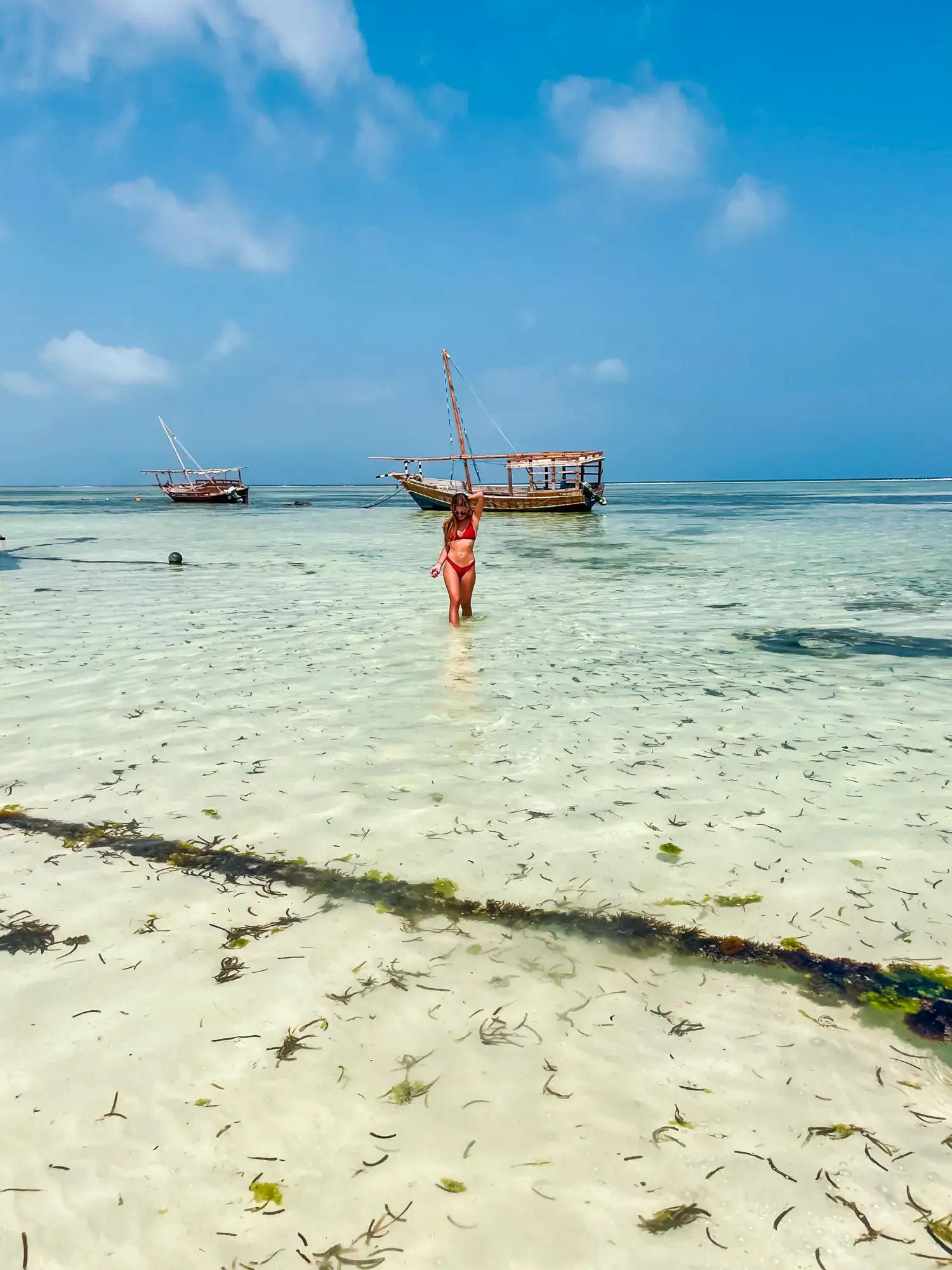
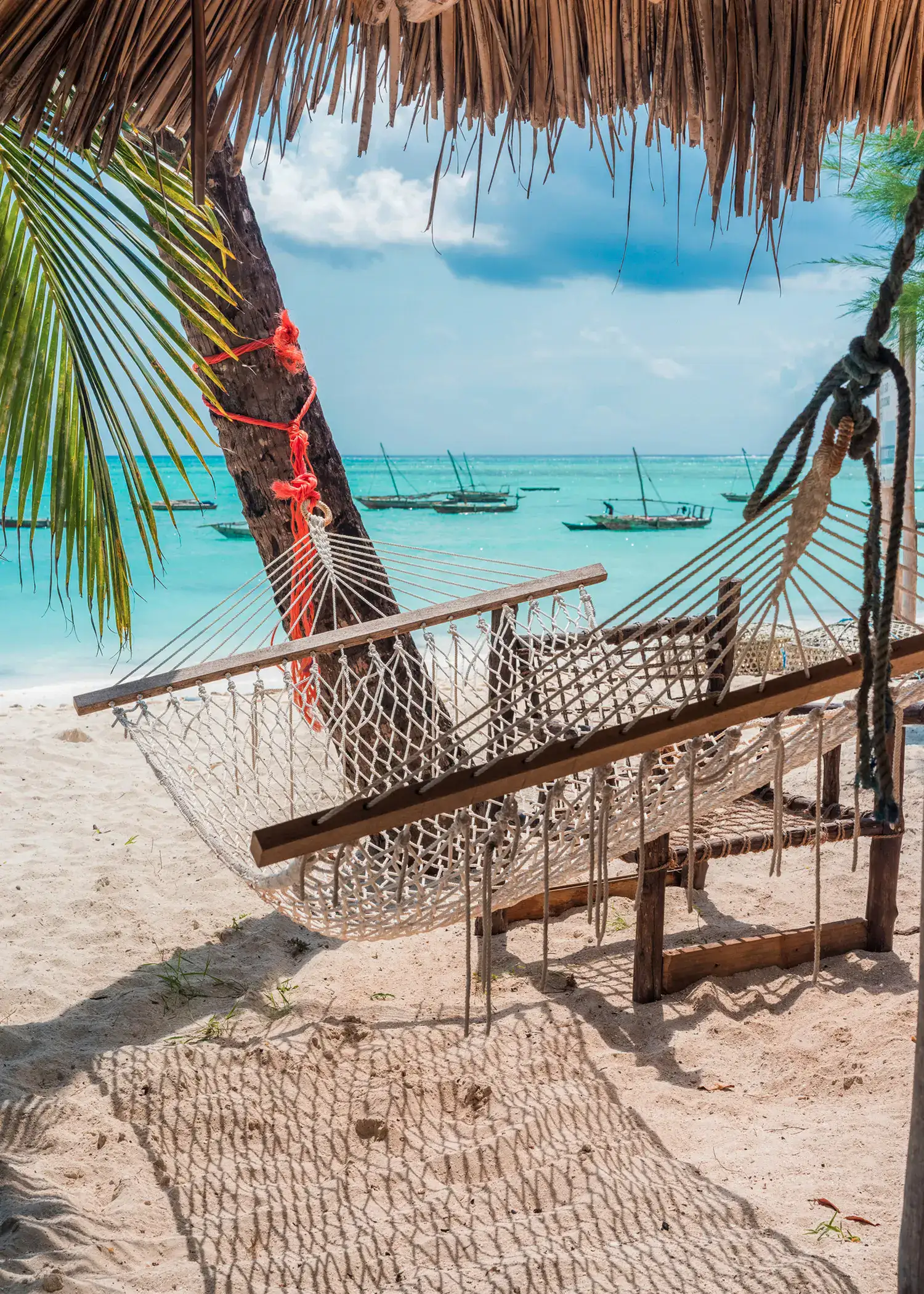
Hi, I’m Daniela Küsters, a German-born wanderer who turned a travel blog called Unique Universe into both an excuse and a responsibility to chase the stories that hide beyond the brochure highlights.
When I’m not running SEO audits for boutique hotels or dancing behind Caribbean carnival trucks, I’m usually underwater counting my breath bubbles. My most recent Zanzibar jaunt wasn’t leisure but mission: earn my open-water license, which I celebrated with a turtle high-five at Mnemba.
Article overview
Getting there and around
✈️ Flights: If you’re coming from mainland Tanzania after a safari or hiking Mount Kilimanjaro, pencil in a twenty-minute hop on a prop plane—Precision Air, Coastal, or Auric—out of Dar es Salaam.
Grab a window seat on the right and you’ll spot sandbanks unfolding like spilled flour just before landing, and if you monitor fares two or three weeks out you can usually snag a ticket for around fifty US dollars.
⛴ Ferries: Those allergic to small aircraft book Azam Marine’s fast catamaran; the ride clocks in at about an hour and forty-five minutes, economy seats hover near thirty-five dollars, the more spacious VIP cabin costs roughly double.
Arrive at the port sixty minutes ahead because the boarding scrum operates on a first-crowd, first-served philosophy rather than a tidy queue.
🚖 Taxis and transfers: A pre-arranged driver from the airport to Stone Town runs twenty-five to thirty US dollars—tell them your flight number and they’ll wait when immigration lines meander. Stone Town to Nungwi on the north tip costs about sixty, and drivers are mostly open to negotiated sightseeing detours if you flash an extra ten.
🚚 Daladalas: These open-sided minibusses rumble along numbered routes for coins that wouldn’t buy you chewing gum elsewhere. They leave when full—which might mean a chicken and a bag of cassava flour in your lap.
If you jump aboard, keep some small shilling notes in your front pocket so you’re not fumbling a wad of big bills with everyone watching.
🚘 Car hire: I rent only when I crave the freedom to chase random beaches; you’ll need an on-the-spot Zanzibar permit (twenty-five dollars cash), your own valid license, and nerves for right-hand traffic mixed with surprise speed bumps and goats that have never met a horn they fear.
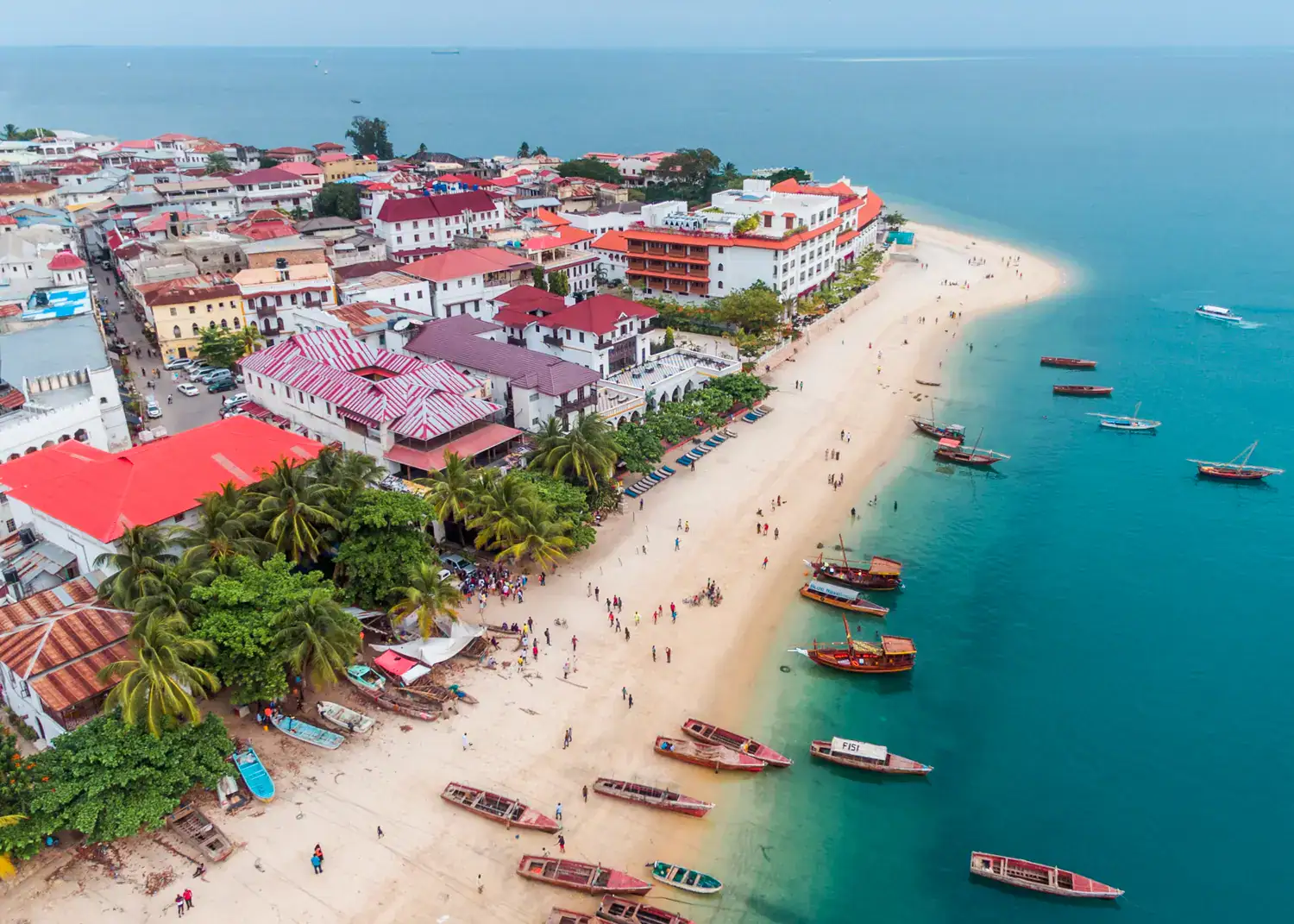
7-day Zanzibar itinerary
This Zanzibar itinerary offers the perfect taste of the island for first-time visitors; Beaches, food, wildlife, shopping, culture and a little spice.
English will get you far, but a friendly “Mambo!” in Swahili opens hearts (and gets you un-lost in a hurry). Also, time here flows differently. Embrace the slower pace, stay flexible, and let Zanzibar surprise you.
Day 1: Losing and finding yourself in Stone Town
Drop your bag—Shoki Shoki House if you’re frugal yet picky, Emerson on Hurumzi if you’re celebrating—and step straight into the winding alleys before you over-plan.
Let the instinct guide you past coral-rag walls stained pink with age, dodge an old man pedaling a Chinese bicycle twice his age, and pause often to study doors studded with brass spikes.
Push north until the lane widens and spices hit you like perfume: that’s Darajani Market, and you want the juice stall on the right where a teenager named Salim blends passion fruit, tamarind, and cane syrup in equal parts sugar and salvation.
After a mid-day nap (the heat punishes bravado), wander down to the seafront. The Old Fort’s blunt walls swallow the setting sun, and as the sky starts its nightly color festival, Forodhani Gardens morphs into Zanzibar’s tastiest circus.
Find the vendor flipping “Zanzibar pizzas” with one hand while assembling squid skewers with the other—order both, add a sugar-cane juice laced with ginger, and accept that tonight you’ll overeat.

Day 2: Spices and giant tortoises
Hire a driver by eight, aim for Kizimbani, and spend the next two hours learning that vanilla is an orchid vine, cinnamon bark looks like curled paper, and nutmeg hides inside a sunny lace called mace.
Guides weave bracelets from lemongrass while you walk, and the tasting spread at the tour’s end—jackfruit, star fruit, and baby bananas dipped in chili salt—makes paying ten bucks feel like daylight robbery (in your favor).
Back on the coast, catch a ten-dollar return boat from Forodhani jetty, drifting across a brittle-blue channel to Prison Island. The prison’s ghost-empty halls echo, but the real stars lumber in the shade: Aldabra giants that out-age your grandparents.
Scratch gently behind a leathery neck, pose for the obligatory slow-motion selfie, then mask up for a shallow snorkel—you’ll spot baby black-tip reef sharks herding anchovies in knee-deep water. By sunset you’re sipping cardamom coffee on a rooftop, plotting the next move.
Day 3: Safari Blue
Set an early alarm, because the taxi to Fumba village takes an hour, and Safari Blue dhows cast off by nine sharp—sharp, island style, meaning nine-ish.
You board barefoot, sails bloom, and ten minutes later land dissolves behind you. The first stop is a sandbank so pristine your footsteps look illegal; guide Rashid slices mango roses and splits open coconuts faster than the tide can erase your footprints.
Spot dolphins on the port side—yes, jump in if the crew nods; the pod usually tolerates respectful swimmers. At Kwale Island lunch is grilled lobster, butter-drenched calamari, and cassava fries; they crack open coolboxes of Kilimanjaro beer, but if you’re diving tomorrow maybe switch to passion-fruit Fanta.
Post-feast, a gentle snorkel drifts you over staghorn coral dripping with purple anthias, and I always pocket a mental note of the tide’s pull because the boat pick-up point shifts. You’ll return sun-drunk, salt-lipped and happy.

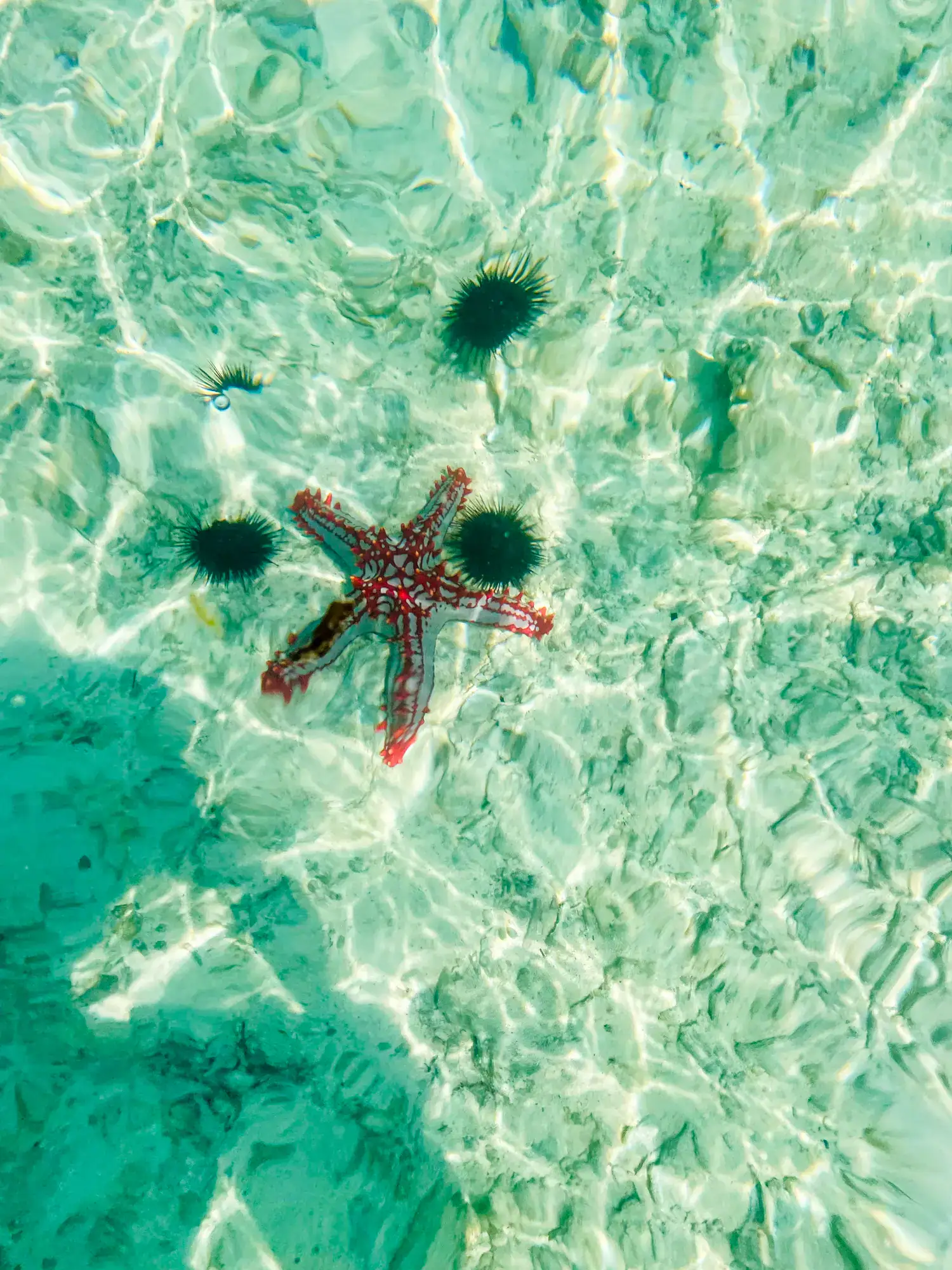
Day 4: North to Nungwi for turtle rehab and octopus on a stick
Grab a seat on the right-hand side of the taxi: sugar-cane fields unroll like lime-green carpet, and you’ll glimpse the Indian Ocean flashing between palms.
In Nungwi village leave your bags and stroll to Mnarani Turtle Centre for the eleven-o’clock feeding.
Volunteers explain how fishing nets saw through turtle flippers; your entry fee funds rehab. At lunchtime follow locals, not TripAdvisor, to Mama Asha’s smoke-blackened grill shack, order octopus skewers, chapati, and a Krest Bitter Lemon soda, then lick the chili off your fingers standing up; no tables, no problem.
The afternoon is yours: some book dive refreshers, others nap under almond trees until the tide creeps high enough for a swim. Sunset belongs to Gerry’s Bar: beanbags, two-dollar Serengeti beers, a live band covering Bob Marley so gently you barely notice the sky bleaching from peach to deep lilac.
The beaches in Nungwi are some of my favorites on the island!
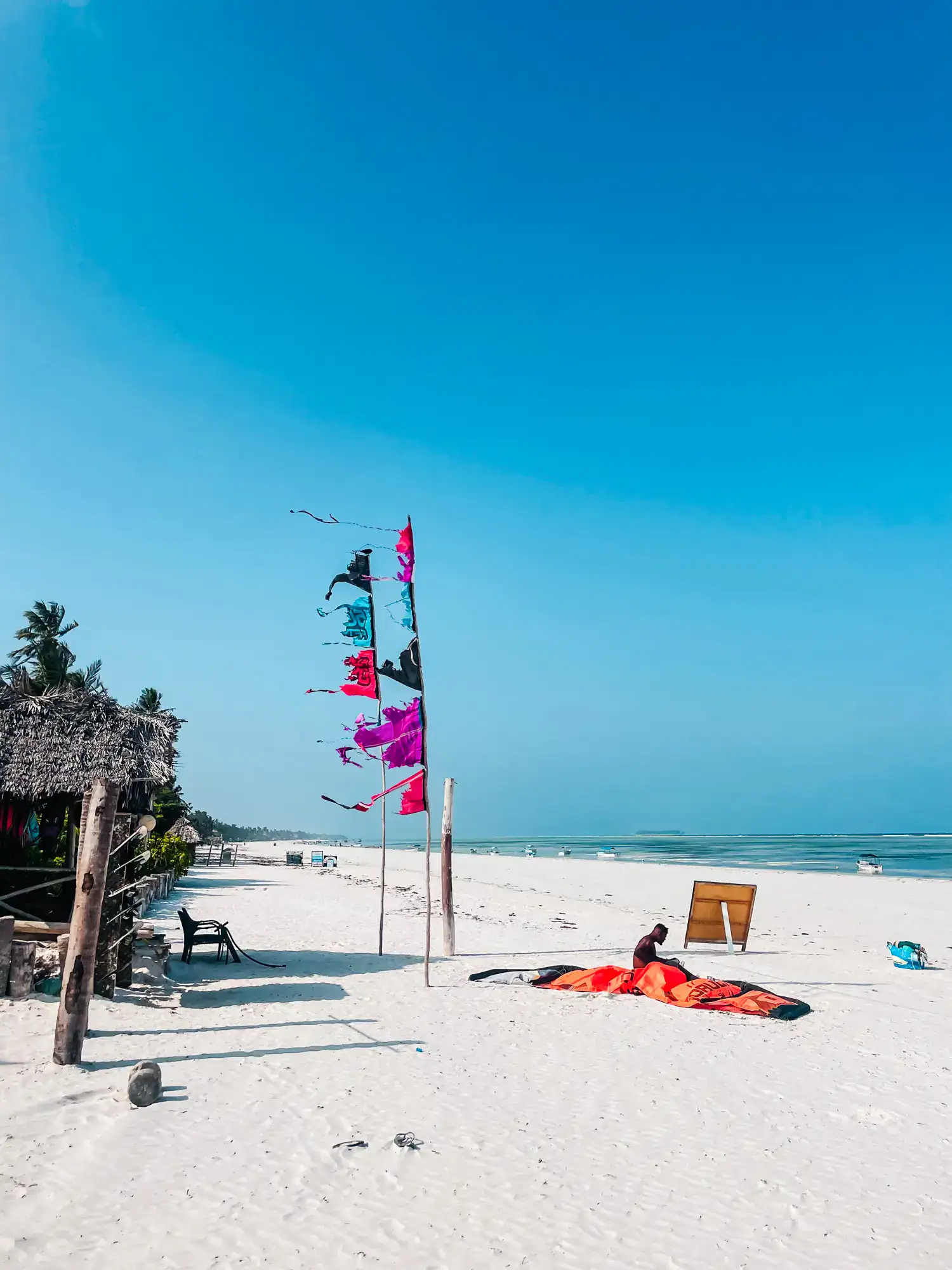
Day 5: Matemwe & Mnemba
Transfer east before dawn—roads are empty, and the rising sun ignites coral rubble walls a fiery gold. Sunshine Marine Lodge sets up breakfast before six if you ask nicely: sweet bananas, mandazi doughnuts, and plunger coffee strong enough to stand a spoon.
At nine the dive boat noses toward Mnemba Atoll, a tiny private island ringed by a marine reserve. My first open-water dive found me kneeling in white sand at twelve meters, clearing my mask while a hawksbill turtle drifted overhead like a lazy zeppelin.
Between dives the skipper passes around pineapple spears and cinnamon cake; remember your reef-safe sunscreen because reflection off the water is savage. Certified or snorkeling, use the lower tide to wander Matemwe’s beach, greeting women stooped over seaweed plots that fund children’s school fees.
If you fancy celebrating your new certification papers, head upstairs to the lodge’s cliff-top bar: order grilled red snapper brushed with tamarind glaze and a glass of chilled South African Chenin Blanc, then stargaze until the Milky Way screams photo-op.
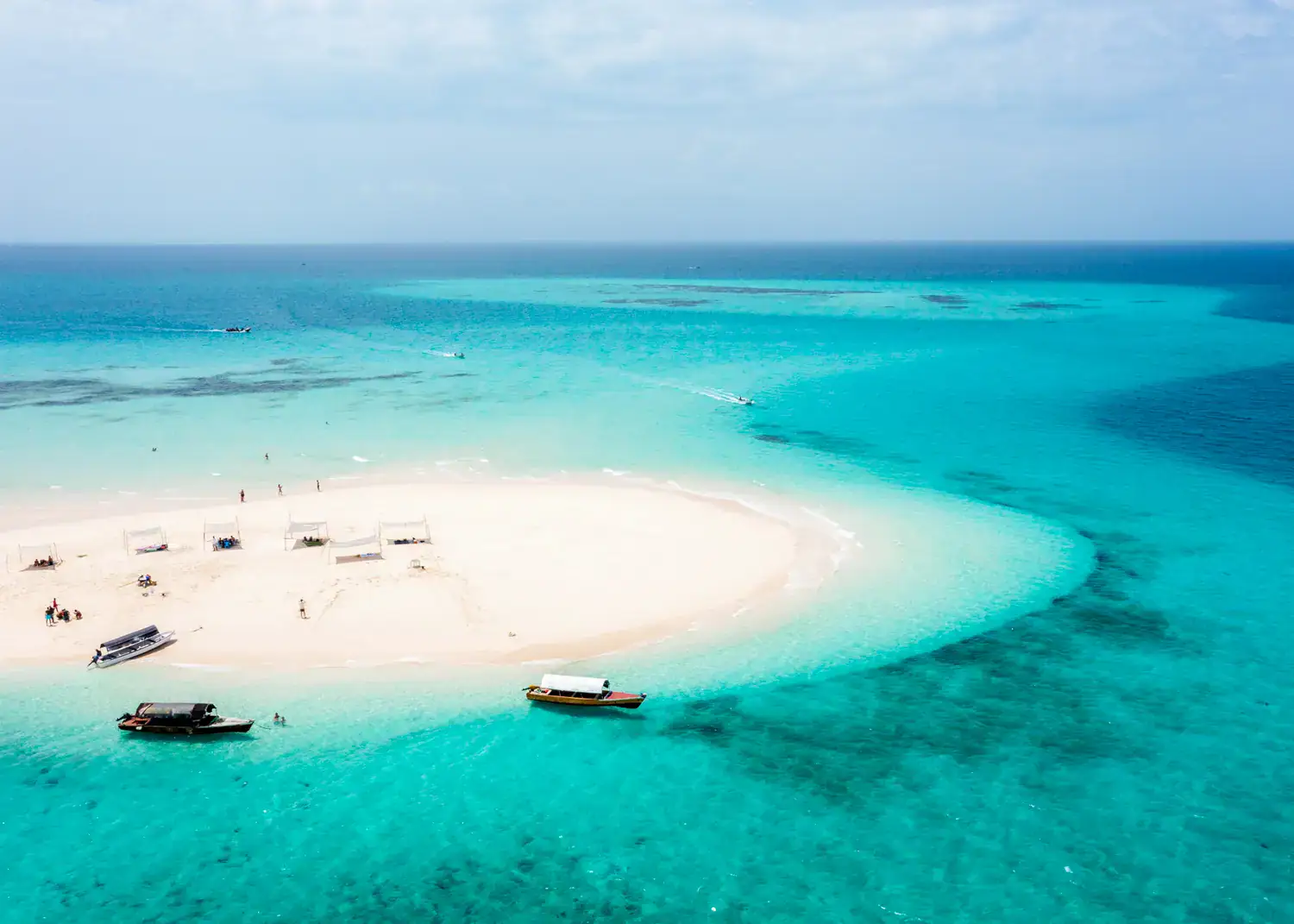
Day 6: Paje & Jambiani: Dinner on a Rock
South-easterly kusi winds wake Paje every afternoon from June through September, and by one o’clock kites loop like confetti over the lagoon. If you’ve never tried, a beginner lesson costs about seventy dollars including a helmet, radio harness, and an instructor yelling cheerful encouragement as you drag through shallows.
Those who prefer dry adventure hop on beach bikes—rentals run eight dollars for half a day—and pedal the narrow coastal road to Jambiani. Halfway lies Kuza Cave, a sinkhole of glassy freshwater hidden behind tangled vines; entry is twenty thousand shillings, and it’s worth every cold shock.
At sunset, I point handlebars to The Rock restaurant—a coral knob that rises from the sea a hundred meters offshore. High tide requires a dinghy ride but last time I was able to wade barefoot, the hem of my kanga skirt salty by the time I climbed the ladder. Order the seafood platter, trust me!
For my fellow lovers of wildlife, you can combine a visit to the Rock Restaurant with a walk in Jozani Forest, home to the beautiful red colobus monkey.

Day 7: Sunrise yoga, final haggles, and a quick goodbye
Matemwe mornings break softer than Stone Town’s, and I join a dawn yoga class on a wooden deck that hangs above the reef; as the teacher guides us into tree pose, crabs scuttle below like moving punctuation.
Post-savasana breakfast is a last wedge of coconut bread washed down with strong coffee sweetened by condensed milk—one final calorie spree to survive the travel day.
The shuttle back to Stone Town offers a final snapshot tour: kids in starched uniforms march to school, roadside stalls stack watermelons, and Spice Tour signs wave like invitations for next time.
Drop at the edge of the maze and dive in to shop: start every negotiation at sixty percent of the first quote, keep jokes bouncing, and never show desperation—there will always be another carved spice box around the next corner.
My haul usually includes Mwani seaweed soaps, plaited palm-leaf baskets, and one unwieldy bundle of cinnamon sticks that perfumes the plane cabin long after we lift off.
Café Tatu at the airport sells the island’s best passion fruit smoothie; buy two, because boarding delays happen, and you’ll want a spare when the air-con battles the afternoon heat.
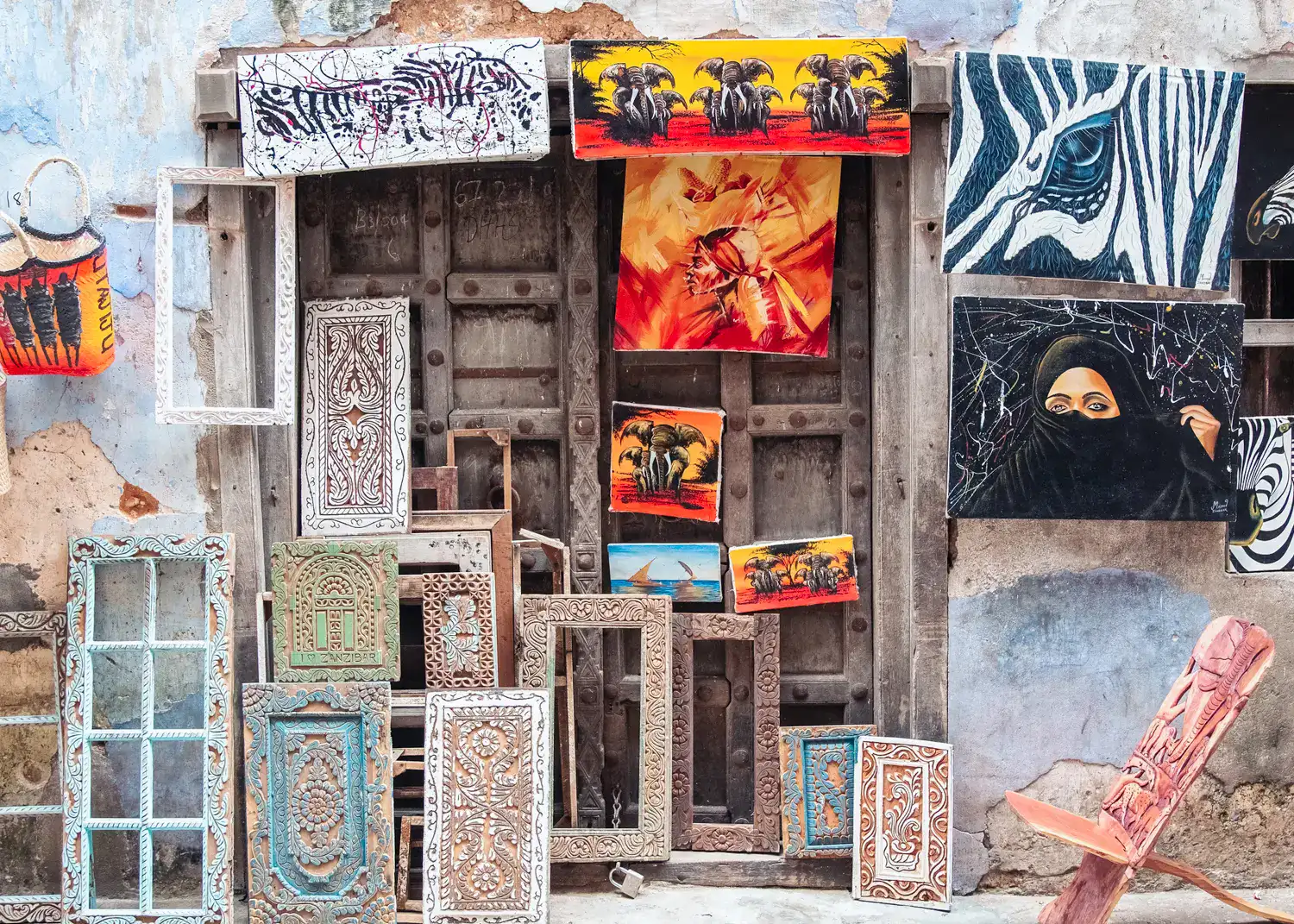
Best and worst times to visit
Think of the Zanzibari year in broad watercolor strokes rather than rigid calendar blocks. June through October delivers day after day of postcard skies, balmy twenty-something temperatures, and sea conditions calm enough that even sworn land-lubbers feel brave on the ferry.
November sprinkles brief showers—usually an hour around lunch—cooling dusty laneways and clearing the beach crowds. Mid-December through February turns the thermostat up and the underwater visibility up even higher; it’s the window I book if I’m prioritizing diving, although hotel rates creep with the mercury.
March, April, and May can feel like the islands slip a giant green blanket over itself: the long rains flood clay backroads, mango trees sag under fresh loads, and the bargain hunter in me twitches because boutique rooms you’d never touch in high season suddenly cost less than a fancy dinner back home.
My personal favored sliver is late May into the opening days of June when the weather often snaps dry, flowers still glow neon from the rains, and every sunset feels like the first one of the season.
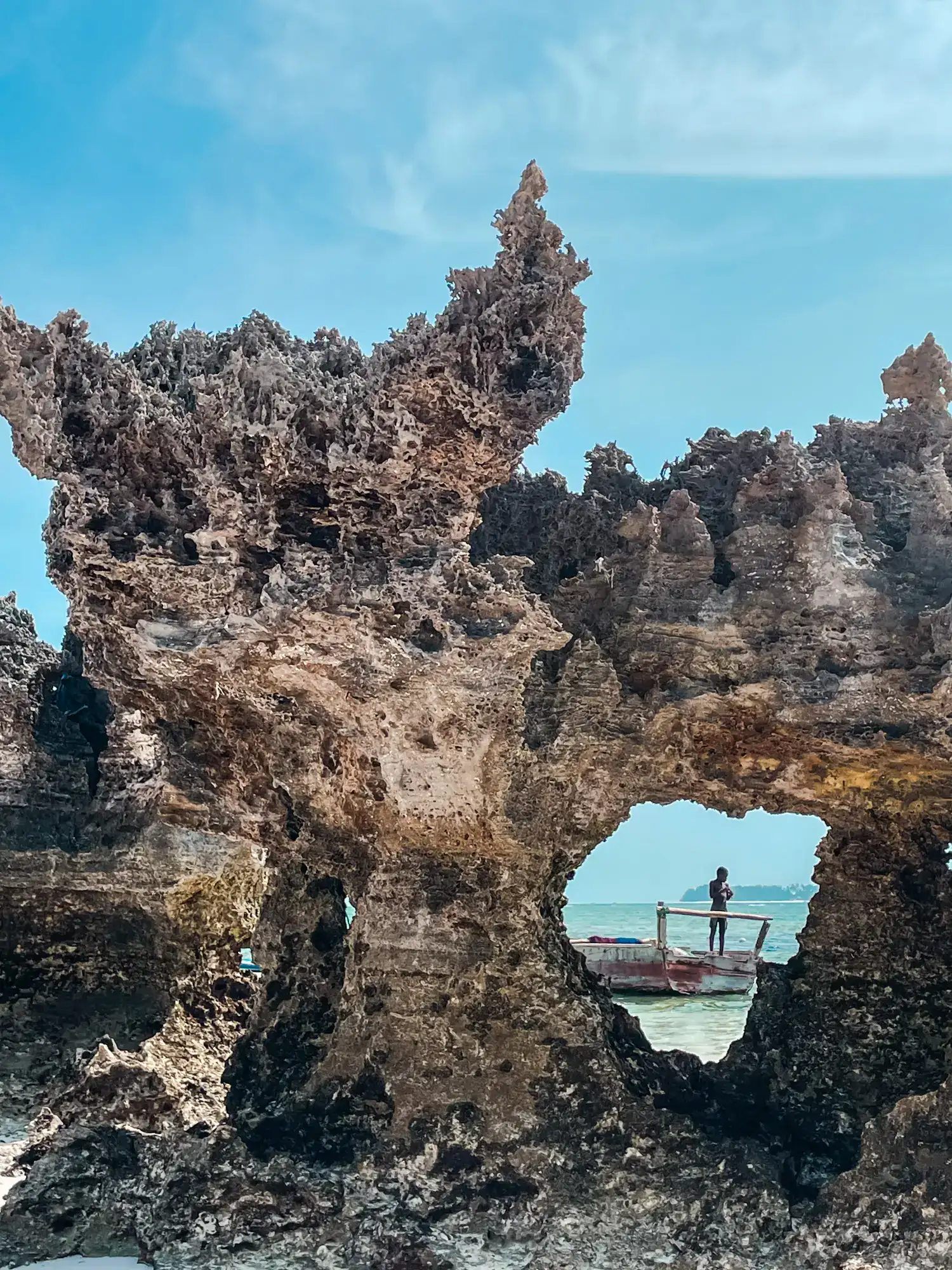
Where to stay
In Stone Town I keep returning to Shoki Shoki House because the top-floor triple windows frame a postage-stamp view of blue water and rusty minarets, breakfast arrives with cinnamon coffee and slices of jackfruit, and the owner lends out a battered city map annotated with her own food tips.
If the trip coincides with birthdays or anniversaries, I splurge on Emerson on Hurumzi: four-poster beds draped in mosquito netting thick as theatre curtains, freestanding copper tubs filled on request, and a rooftop taarab dinner where musicians play while the chef plates lime-drenched snapper you eat seated on velvet cushions.
When city lanes start to tighten around my ankles I escape to Sunshine Marine Lodge in Matemwe. The walkways are weathered wood, bright bougainvillea spill-over railings, and every veranda hosts a canvas hammock wide enough for two.
Their eco credentials are more than brochure fluff: solar panels feed the battery bank, water comes from a desalination well, and you won’t find a single disposable plastic bottle on site.
Plus, the in-house dive shop means I roll out of bed, zip into my wetsuit, and slide straight into the boat without wasting that golden early-morning flat-sea window.
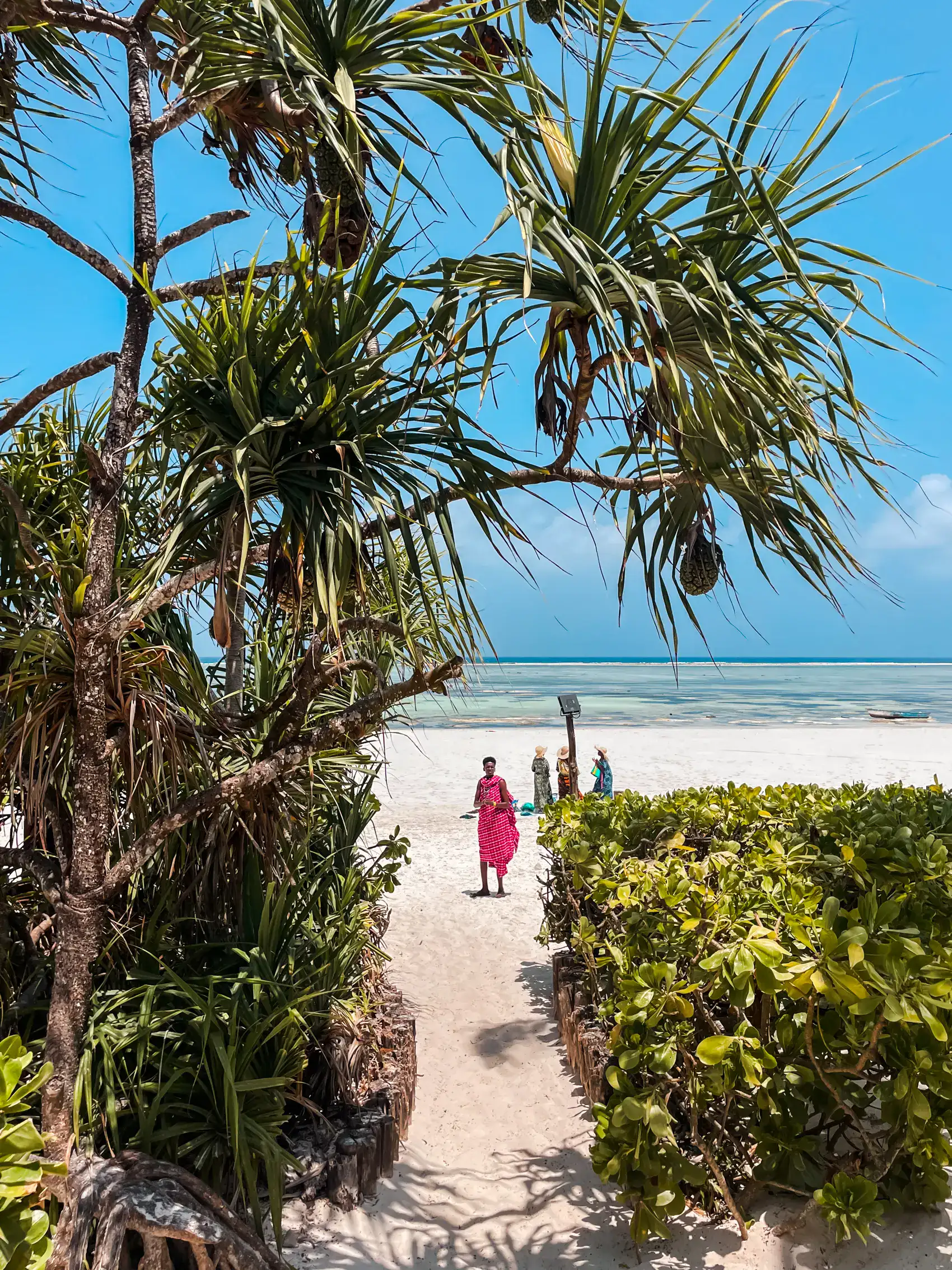
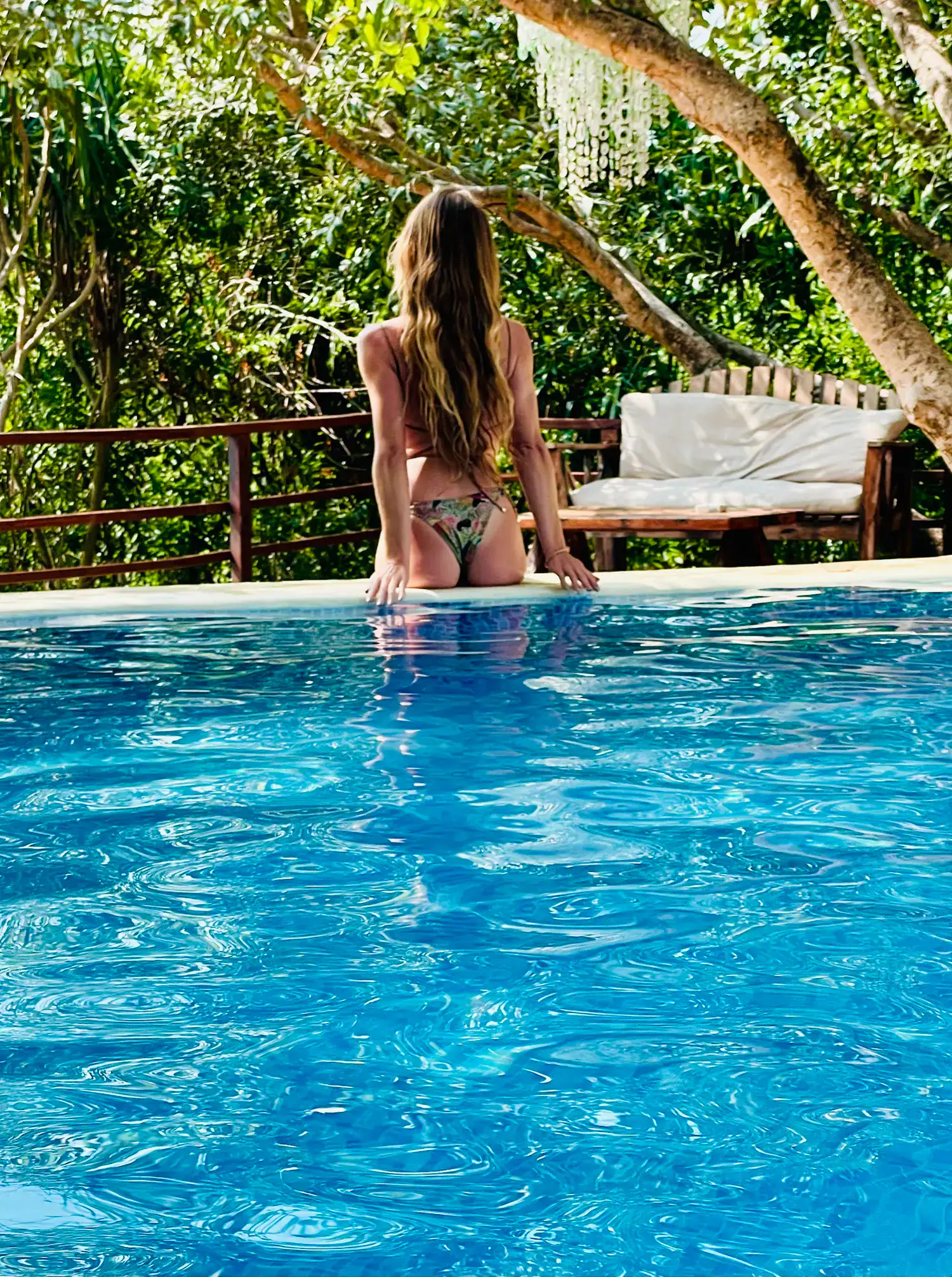
Good to know before visiting Zanzibar
📲 Data: Get an eSIM, gone are the days when you had to swtich between SIM hoping not to get scammed. I use Airalo.
🛡Travel insurance: Print—yes, on paper—your travel insurance confirmation; phone screens glitch, and border officers like tangible proof.
👚 What to wear: Shoulder-covering cotton or linen beats synthetics in the humidity and avoids offending elders in conservative villages. I love to wear a light kimono over a sundress.
👗 Shop: Choose souvenirs from women-run cooperatives—seaweed soaps and hand-loomed kikoi wraps funnel shillings back into classrooms and health clinics.
💧 Is tap water drinkable?: No. Bring a filtered bottle, fill your bottle at café using UV filters or grab sealed five-litre jugs from mini-marts.
✅ Is it safe: Yes, Zanzibar is generally safe for travelers, especially in popular tourist areas — but like any destination, keep your wits about you. After dark, stick to the lit seafront, ignore catcalls with a polite “Siwazi, asante” (“No, thanks”), and you’ll be fine.
🪸 Protect the reef: Leave the hard plastic reef shoes at the market stall; they crush coral polyps and mark you as inexperienced, instead enter only on sandy patches and float rather than stand. And, as always, use reefsafe sunscreen.
Ask dive shops if they’re signed up with Green Fins or any local reef-restoration schemes—your business nudges the industry forward.
🐢 Respect wildlife: Resist any tout offering turtle rides, starfish selfies, or dolphin chasing. Go with certified companies and watch respectfully, let’s keep wildlife wild.
Pack it light, pack it right
My carry-on checklist rarely changes:
- Two linen shirts
- A pair of quick-dry shorts
- One cotton kanga that doubles as a scarf
- A towel, and picnic rug
- Reef-safe zinc sunscreen
- DEET spray
- Cheap sunglasses in case they sail overboard
- Waterproof phone pouch
- Universal adapter
- A power bank
- Cash in tens and fives
- If diving, my certification card plus a light wetsuit because rental suits sometimes smell like everyone who used them before.
- Reusable or filtered bottle
🌟 LifeStraw Go Water Filter Bottle
My favorite bottle for travel, backpacking and hiking.
You can fill it up anywhere, LifeStraw filters bacteria, parasites, chemicals and microplastics.
For every LifeStraw product purchased, a child in need receives safe water for an entire school year!
🐘 Don’t forget to check out my guide to organizing the perfect Tanzania and Zanzibar safari.
🦓 Or, if you mainly want to enjoy beach life, you can also do a quick 2-day safari from Zanzibar.
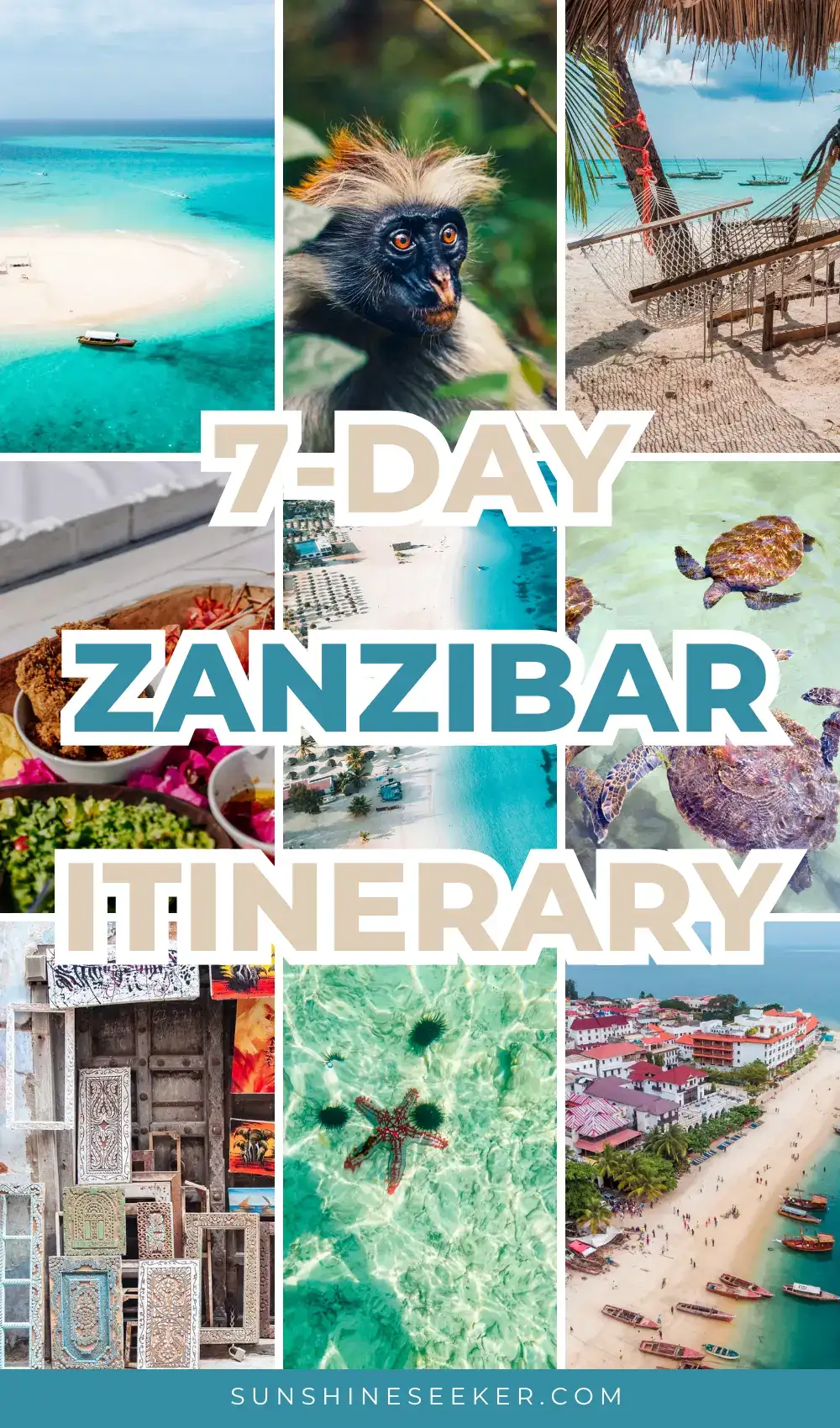
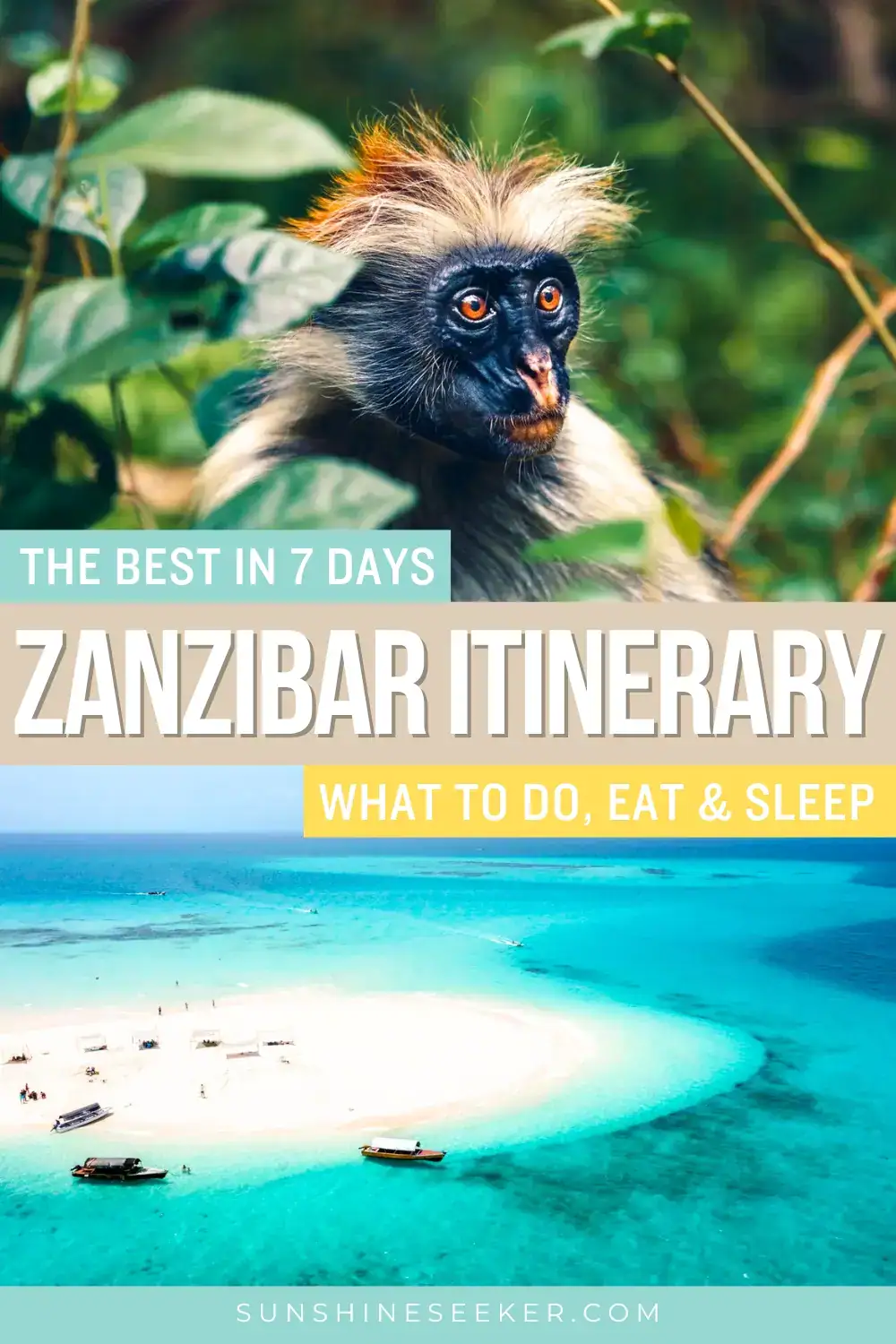







Leave a Reply